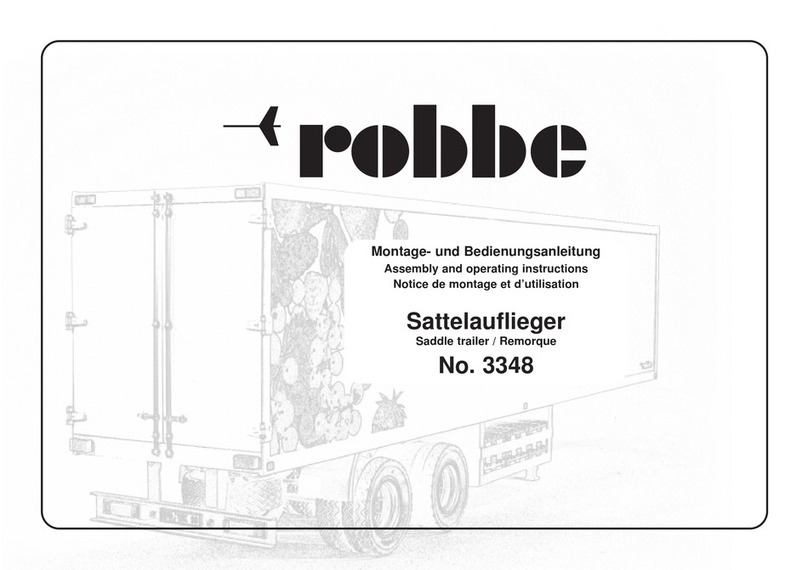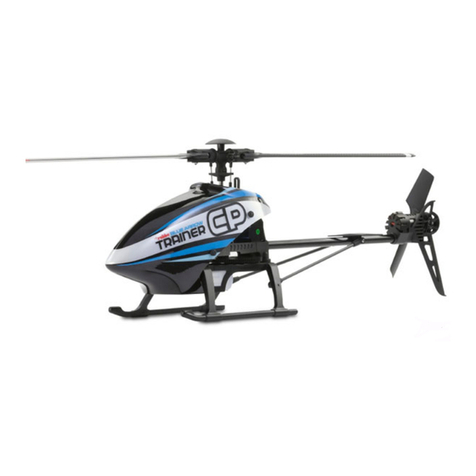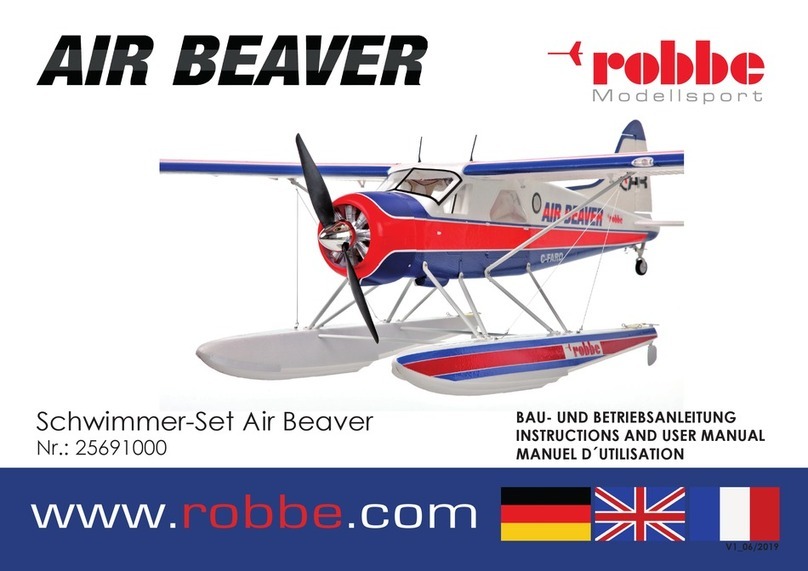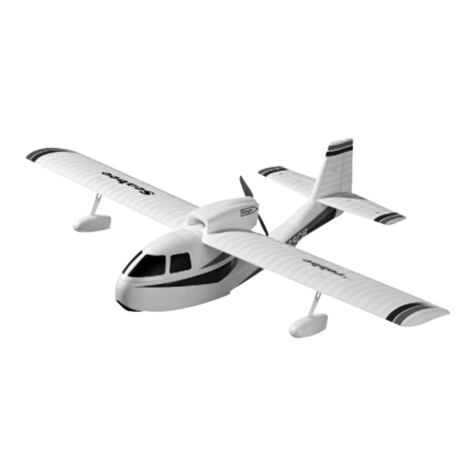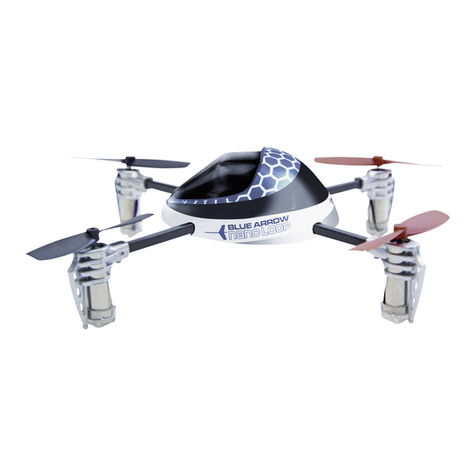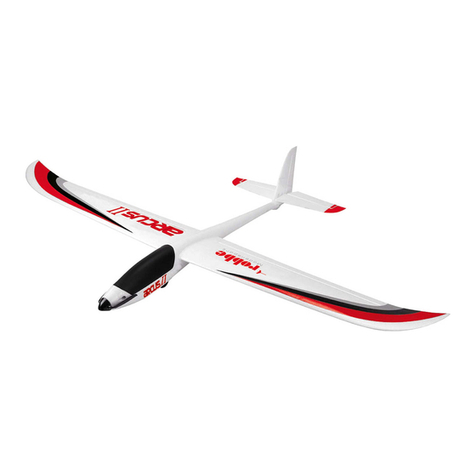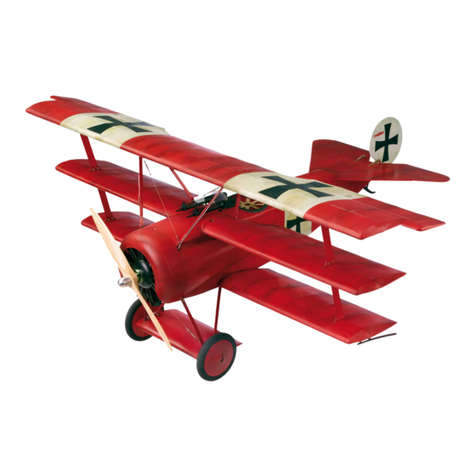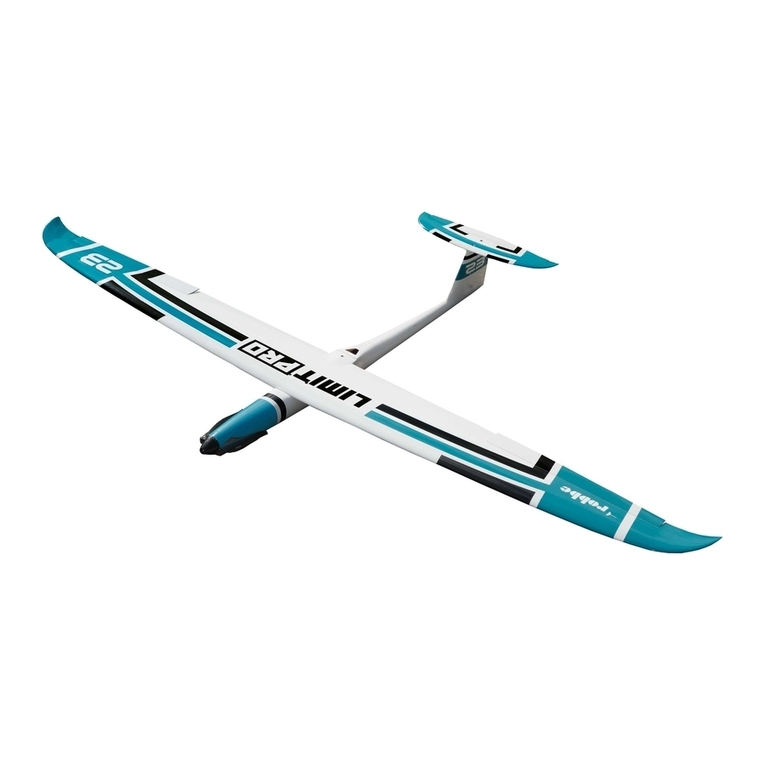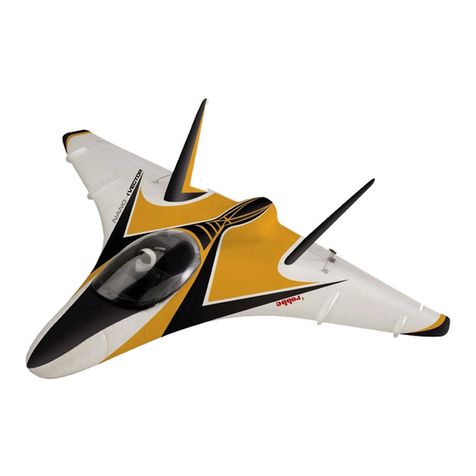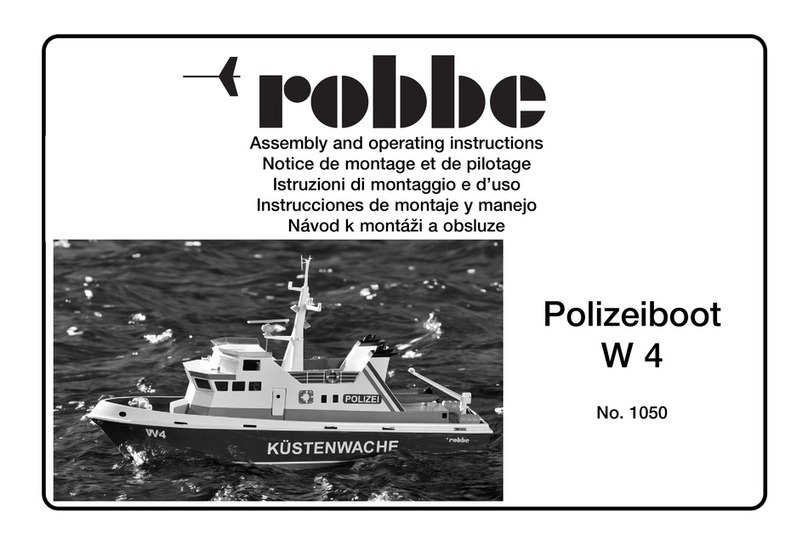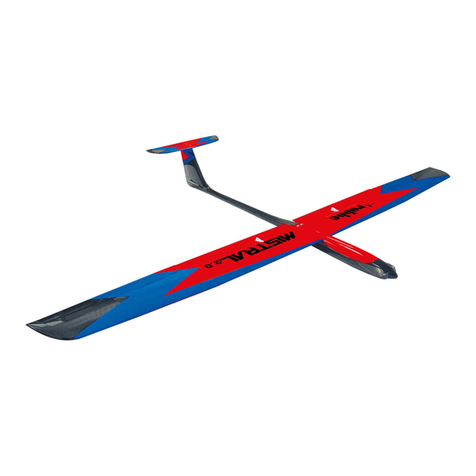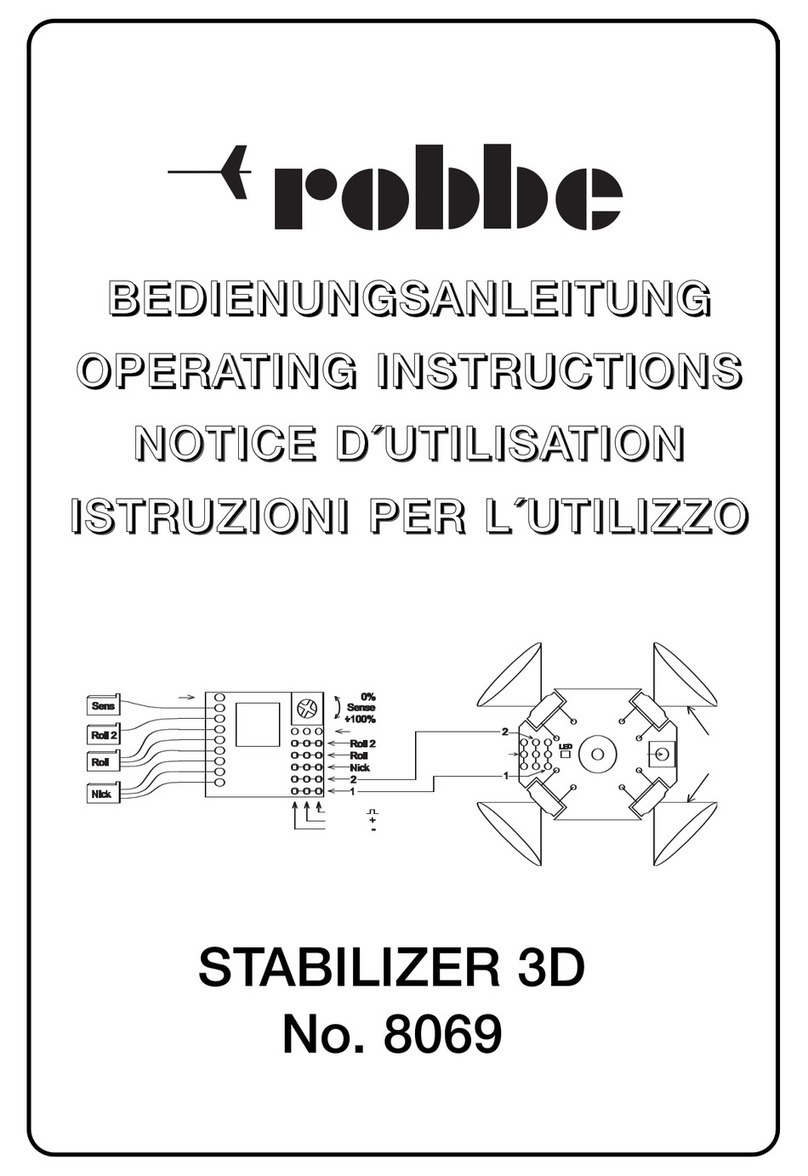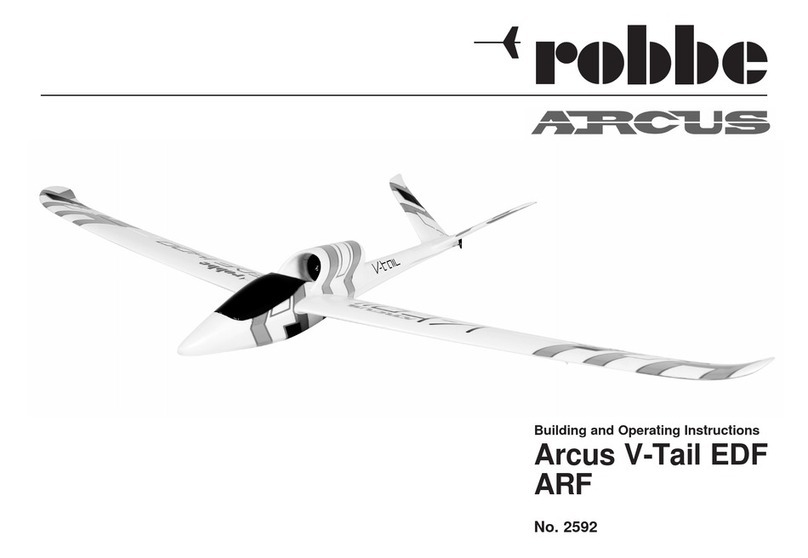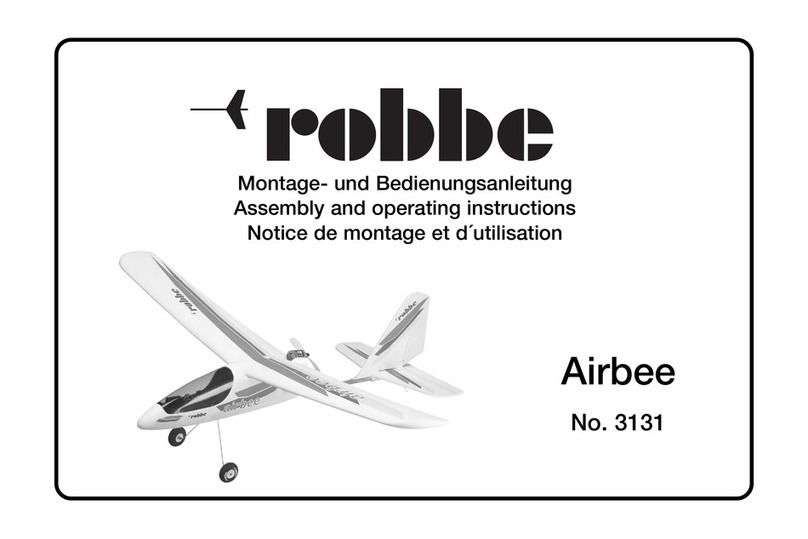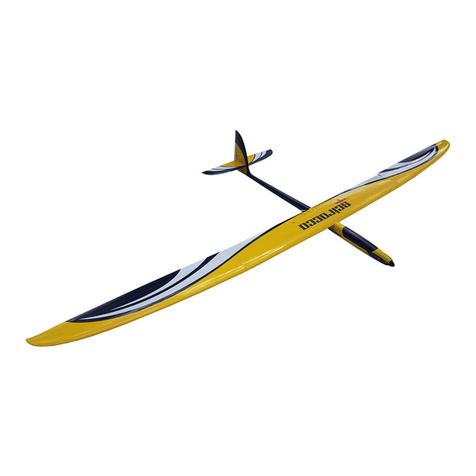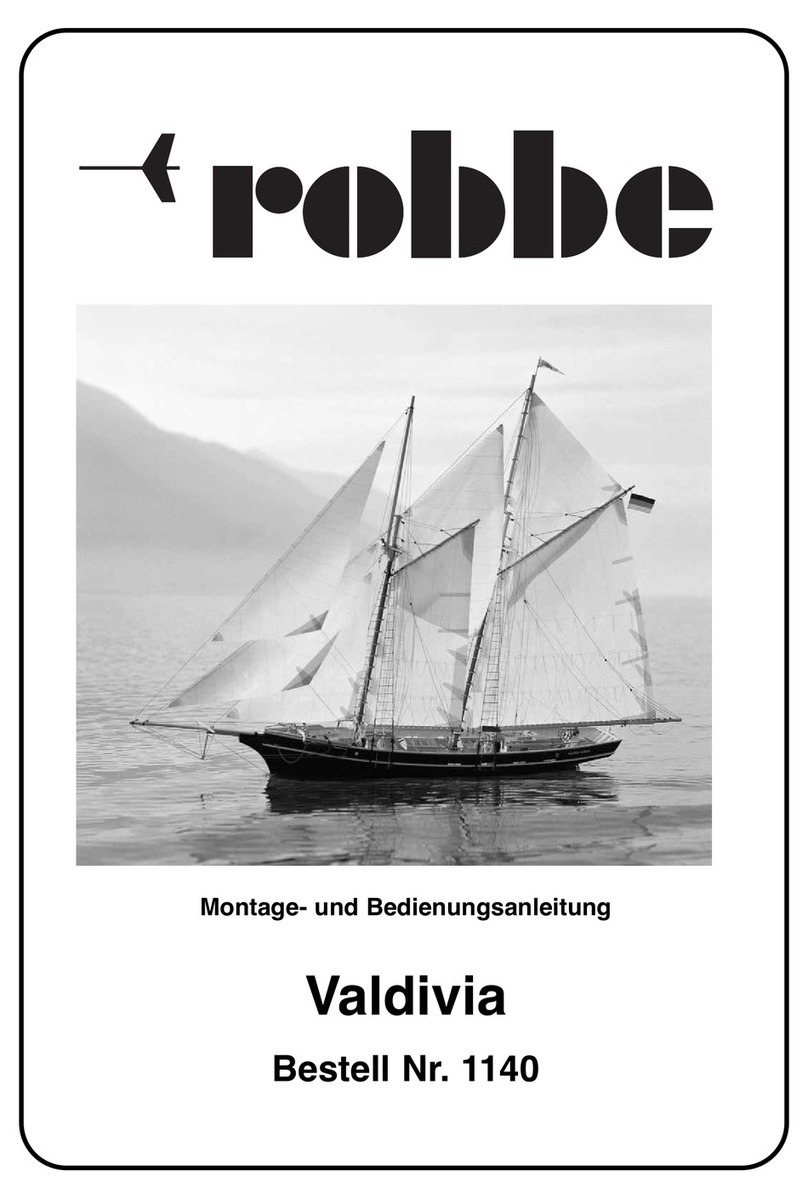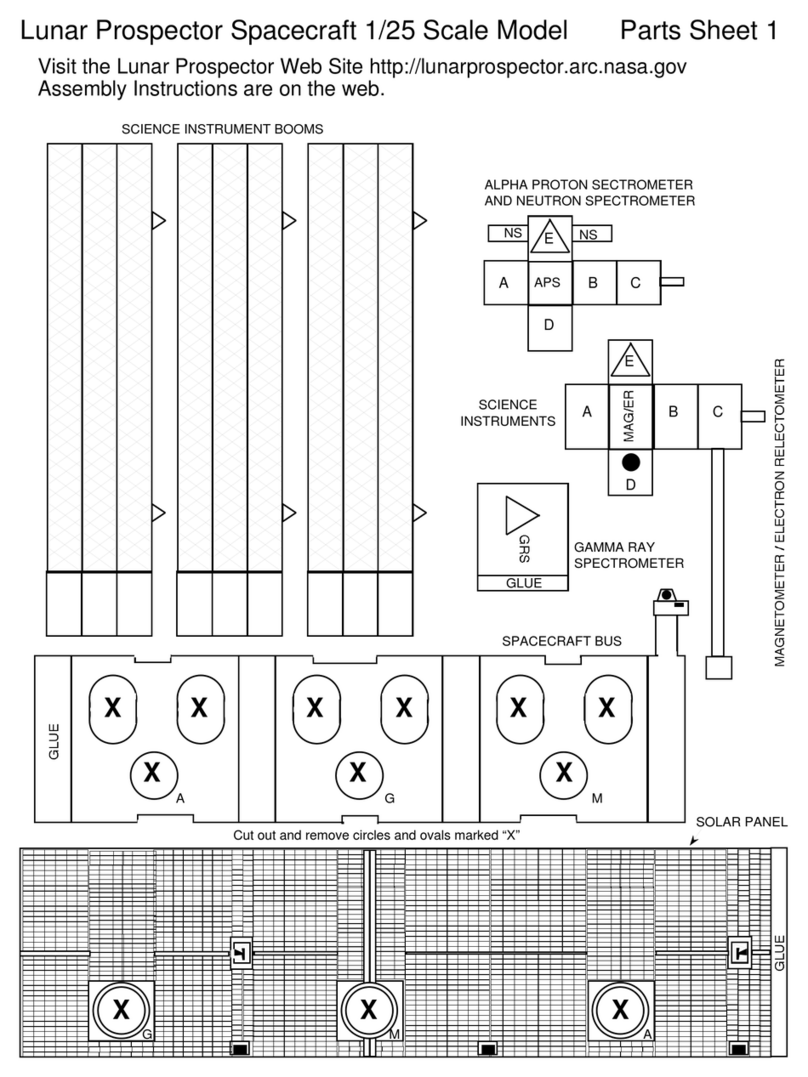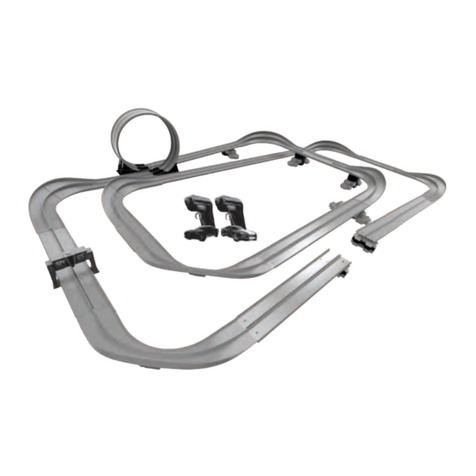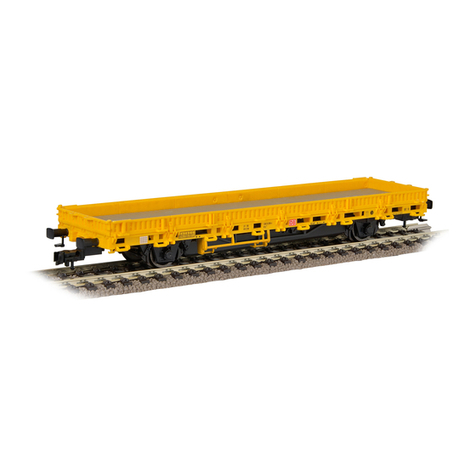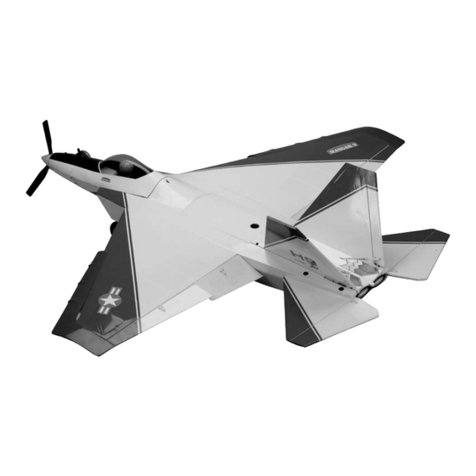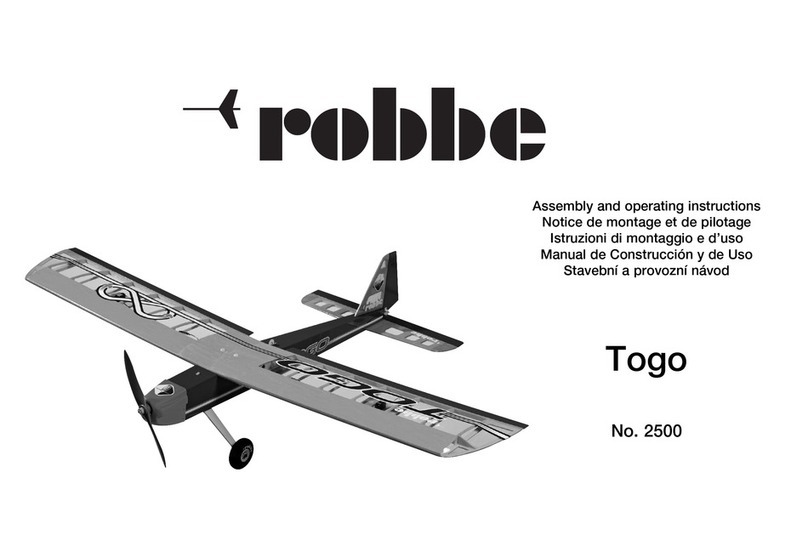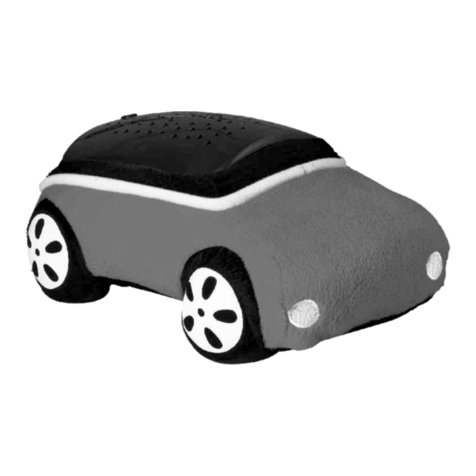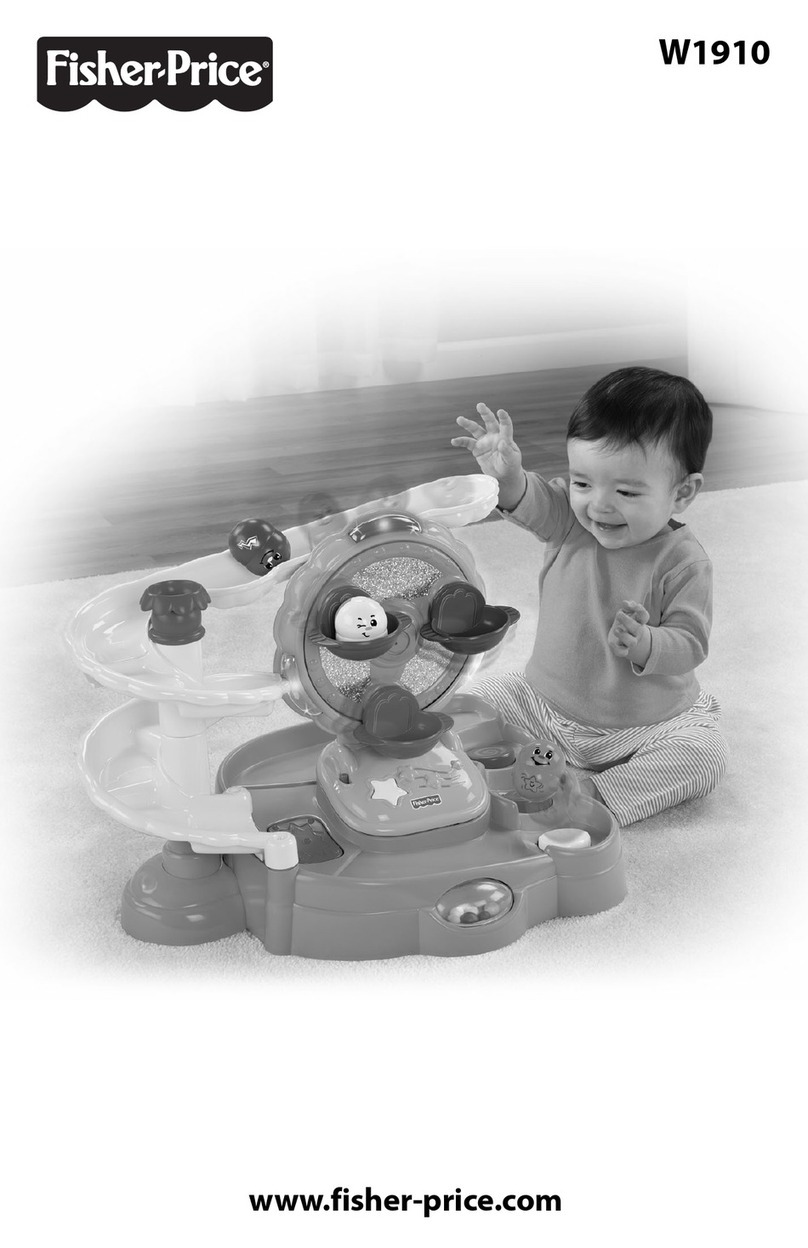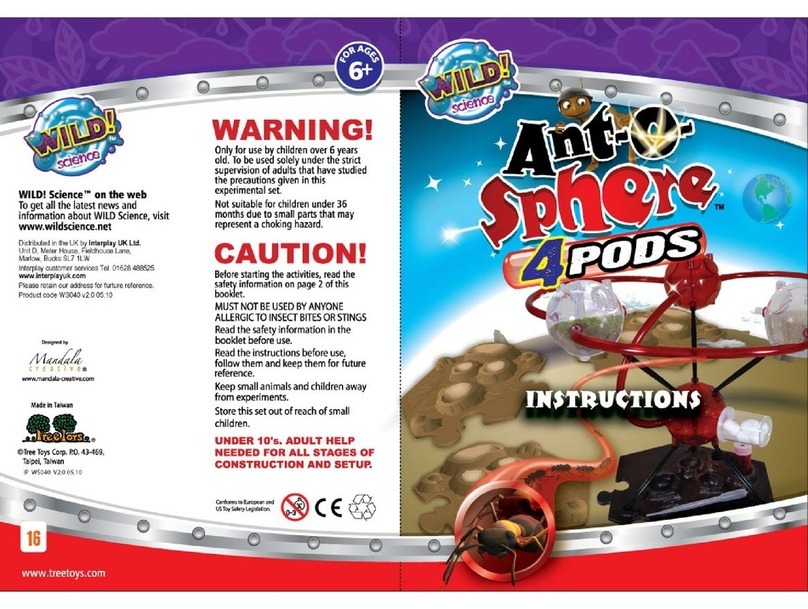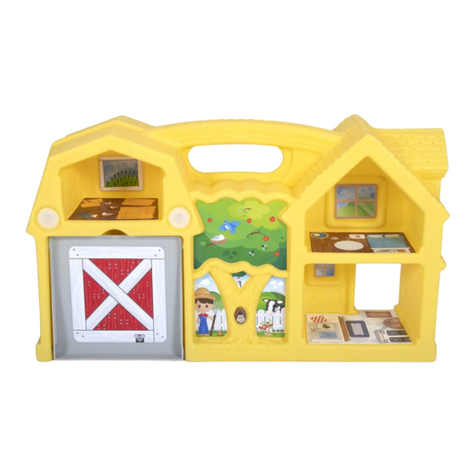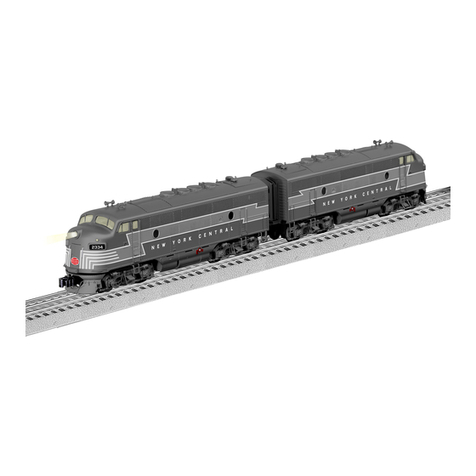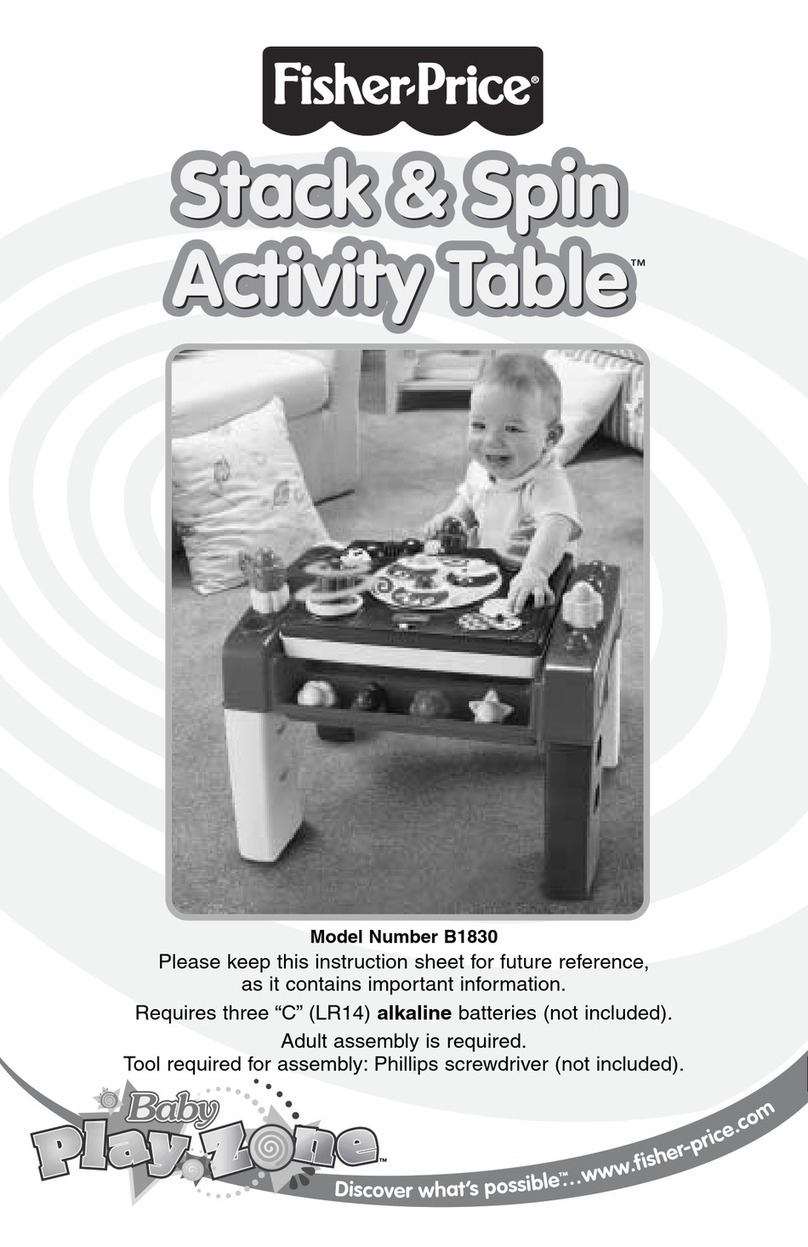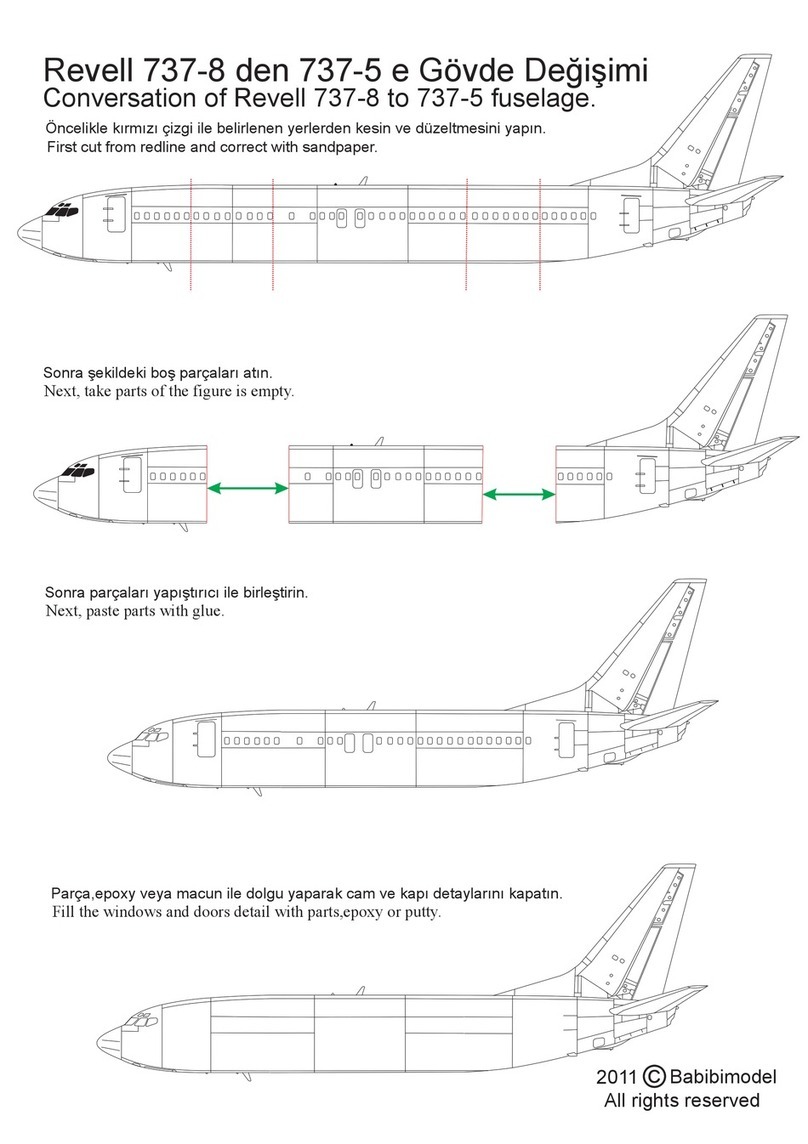MAN F2000 Evolution Baustufe 6
19
Baustufe 6: Kotflügel und Rückleuchten
Pos.-Nr. Bezeichnung Maße (mm) Anzahl
6.1 Kotflügel, vorne rechts 1
6.2 Kotflügel, vorne links 1
6.3 Kotflügel, hinten, zweiteilig 2
6.4 Zylinderschraube M2 x 40 4
6.5 Rücklicht 2
6.6 Streuscheibe, klar-transparent 2
6.7 Streuscheibe, rot-transparent 4
6.8 Streuscheibe, orange-transparent 2
6.9 Rücklicht-Halter 2
6.10 Blechschraube ø2,2 x 9,5 4
6.11 Sechskantmutter M2 4
6.12 Schlauchstück ø 4 x 15 4
Vorbereitende Arbeiten:
- Die hinteren Kotflügel 6.3 nach den inneren
Markierungen teilen. Die Mittelteile werden nicht
benötigt.
-Kotflügel 6.1 - 6.3 und Rücklichthalter 6.9
grundieren, lackieren und trocknen lassen.
-Metallisierung der Rücklichter 6.5 an den Klebeflächen
und stirnseitig am umlaufenden Rand entfernen!
Rand schwarz lackieren.
Zusammenbau der rückwärtigen Beleuchtungseinheit
und Montage der Kotflügel (Pos. 6.1- 6.12)
-Streuscheiben 6.6 - 6.8 in die Rücklichter 6.5 einset-
zen und mit wenig Sekundenkleber sichern.
-Einheiten 6.5 - 6.8 in die Rücklicht-Halter 6.9 einkle-
ben.
-Erstellen Sie zwei spiegelbildliche Rücklicht-Einheiten,
1x Blinker rechts, 1x Blinker links.
-Rücklicht-Halter 6.9 mit Blechschrauben 6.10 an die
hinteren Kotflügel 6.3 schrauben,
-überstehende Schraubenenden kürzen.
-Vordere Kotflügel 6.1 und 6.2 auf die Gewindestangen
4.4 aufstecken.
-Zylinderschrauben 6.4 mit Sechskantmuttern 6.11 am
Leiterrahmen 1.1 verschrauben, mit flüssigem
Schraubensicherungsmittel sichern.
-Schlauchstücke 6.12 aufschieben.
-Kotflügel 6.3 mit dem längeren Schenkel nach vorne
auf die Schraubenenden aufschieben und ausrichten
(Abstand zum Chassis 6mm) und mit wenig
Sekundenkleber fixieren.
Stage 6: Mudguards and rear light clusters
Part No. Description Size (mm) No. off
6.1 Front right-hand mudguard 1
6.2 Front left-hand mudguard 1
6.3 Rear mudguard, two parts 2
6.4 Socket-head cap screw M2 x 40 4
6.5 Rear light cluster 2
6.6 Light cover, clear 2
6.7 Light cover, red translucent 4
6.8 Light cover, orange translucent 2
6.9 Rear light holder 2
6.10 Self-tapping screw 2.2 Ø x 9.5 4
6.11 Hexagon nut M2 4
6.12 Hose ø 4 x 15 4
Preparation:
- Cut the rear mudgards 6.3 in two pieces along the lines
shown on the inner side. The centre parts are not nee-
ded.
-Prime the mudguards 6.1 - 6.3 and the rear light holder
6.9, paint them and allow to dry.
-Remove metallised coating from joint surface and front
face of the rear lights 6.5. Paint the edge black.
Assembling the rear light units,
installing the mudguards (parts 6.1 - 6.12)
-Push the covers 6.6 - 6.8 into the rear light clusters 6.5
and secure them with a little cyano.
-Glue the rear lights 6.5 - 6.8 in the rear light holders 6.9.
-Take care to make up two mirror-image rear light
clusters, 1 x flasher right, 1 x flasher left.
-Fix the rear light holders 6.9 to the rear mudguards
6.3 using the self-tapping screws 6.10,
-cut off the excess screw length
- Slip the front mudguards 6.1 and 6.2 onto the threaded
rods 4.4.
-Screw the socket-head cap screw 6.4 into the ladder
frame 1.1. Screw a hexagon nut 6.11 onto each of the
socket-head cap screws 6.4.
Secure them with thread-lock fluid.
- Slip the pieces of hose 6.12 onto the socket-head cap
screws 6.4.
-Slip the mudguards 6.3 onto the socket-head cap
screws and align them (distance to chassis 6mm). The
longer part of the rear mudguards should face forward.
Secure the mudguards with a little cyano.
Stade 6: garde boues et feux arrière
n° désignation cotes (mm) nbre
6.1 garde boue avant droite 1
6.2 garde boue avant gauche 1
6.3 garde boue arrière, deux pièces 2
6.4 vis à tête cylindrique M2 x 40 4
6.5 feu arrière 2
6.6 diffuseur, transparent 2
6.7 diffuseur, rouge transparent 4
6.8 diffuseur, orange transparent 2
6.9 support de feu arrière 2
6.10 vis autotaraudeuse ø 2,2 x 9.5 4
6.11 écrou six pans M2 4
6.12 Flexible ø 4 x 15 4
Travaux préliminaires:
- Couper les garde-boues arrière 6.3 en deux pièces selon
les répères à l’intérieur. Les pièces médianes sont super-
flues.
-Apprêter les garde boues 6.1 à 6.3 et le support de feu
arrière 6.9, les peindre et les laisser sécher.
-Retirer le film métallisé des feux arrière 6.5 au niveau
des surfaces d´encollage et sur les parties frontales, tout
autour. Peindre le bord en noir.
Assemblage de l’unité d’éclairage arrière et
montage des garde boues (n° 6.1 à 6.12)
-Installer les diffuseurs 6.6 à 6.8 dans les feux arrière 6.5
et les fixer avec un peu de colle cyanoacrylate
-Coller les unités 6.5 à 6.8 dans les supports de feu
arrière 6.9.
-Réaliser deux unités de feux arrière symétriques,
1 clignotant à droite, 1 clignotant à gauche
-Visser le support de feu arrière 6.9 sur le garde boue
6.3 avec les vis autotaraudeuses 6.10
-couper les extrémités en saillie des vis.
- Planter les garde boues 6.1 et 6.2 sur les tiges filetées
4.4. Engager les vis à tête cylindrique 6.4 dans les alésa-
ges du châssis 1.1. Monter chaque fois un écrou six pans
6.11 et, freiner avec un produit approprié.
- Glisser les morceaux de flexible 6.12 sur le vis à tête
cylindrique.
-Planter les garde boues 6.3 sur les vis à tête cylindrique
6.4 (les languettes les plus longues sont tournées vers
l’avant) et les aligner par rapport aux pneumatiques
(écart par rapport au châssis 6mm). Fixer les garde
boues avec un peu de colle cyanoacrylate.





















